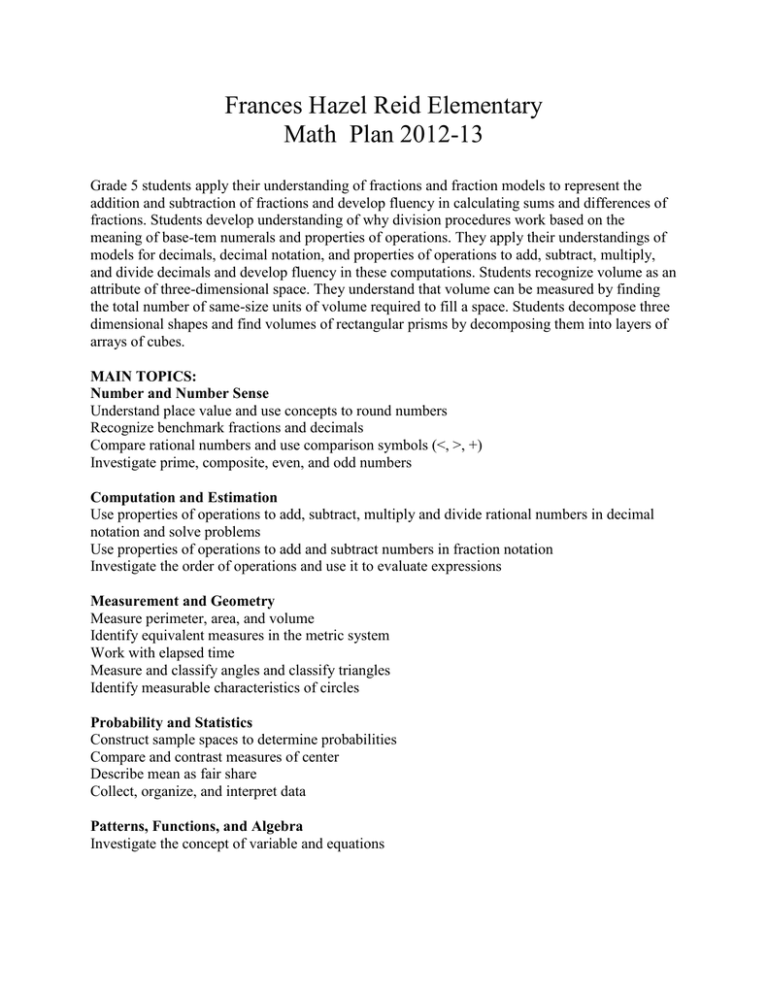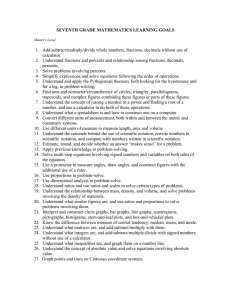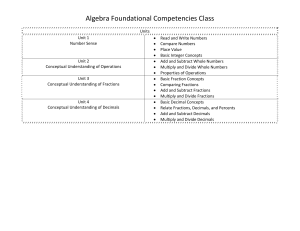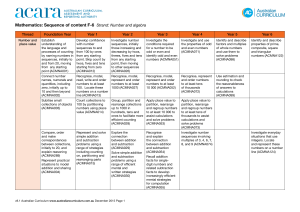Frances Hazel Reid Elementary Math Plan 2012-13
advertisement

Frances Hazel Reid Elementary Math Plan 2012-13 Grade 5 students apply their understanding of fractions and fraction models to represent the addition and subtraction of fractions and develop fluency in calculating sums and differences of fractions. Students develop understanding of why division procedures work based on the meaning of base-tem numerals and properties of operations. They apply their understandings of models for decimals, decimal notation, and properties of operations to add, subtract, multiply, and divide decimals and develop fluency in these computations. Students recognize volume as an attribute of three-dimensional space. They understand that volume can be measured by finding the total number of same-size units of volume required to fill a space. Students decompose three dimensional shapes and find volumes of rectangular prisms by decomposing them into layers of arrays of cubes. MAIN TOPICS: Number and Number Sense Understand place value and use concepts to round numbers Recognize benchmark fractions and decimals Compare rational numbers and use comparison symbols (<, >, +) Investigate prime, composite, even, and odd numbers Computation and Estimation Use properties of operations to add, subtract, multiply and divide rational numbers in decimal notation and solve problems Use properties of operations to add and subtract numbers in fraction notation Investigate the order of operations and use it to evaluate expressions Measurement and Geometry Measure perimeter, area, and volume Identify equivalent measures in the metric system Work with elapsed time Measure and classify angles and classify triangles Identify measurable characteristics of circles Probability and Statistics Construct sample spaces to determine probabilities Compare and contrast measures of center Describe mean as fair share Collect, organize, and interpret data Patterns, Functions, and Algebra Investigate the concept of variable and equations Standards for Mathematical Practice 1. Make sense of problems and persevere in solving them. 2. Reason abstractly and quantitatively. 3. Construct viable arguments and critique the reasoning of others. 4. Model with mathematics. 5. Use appropriate tools strategically. 6. Attend to precision. 7. Look for and make use of structure.






